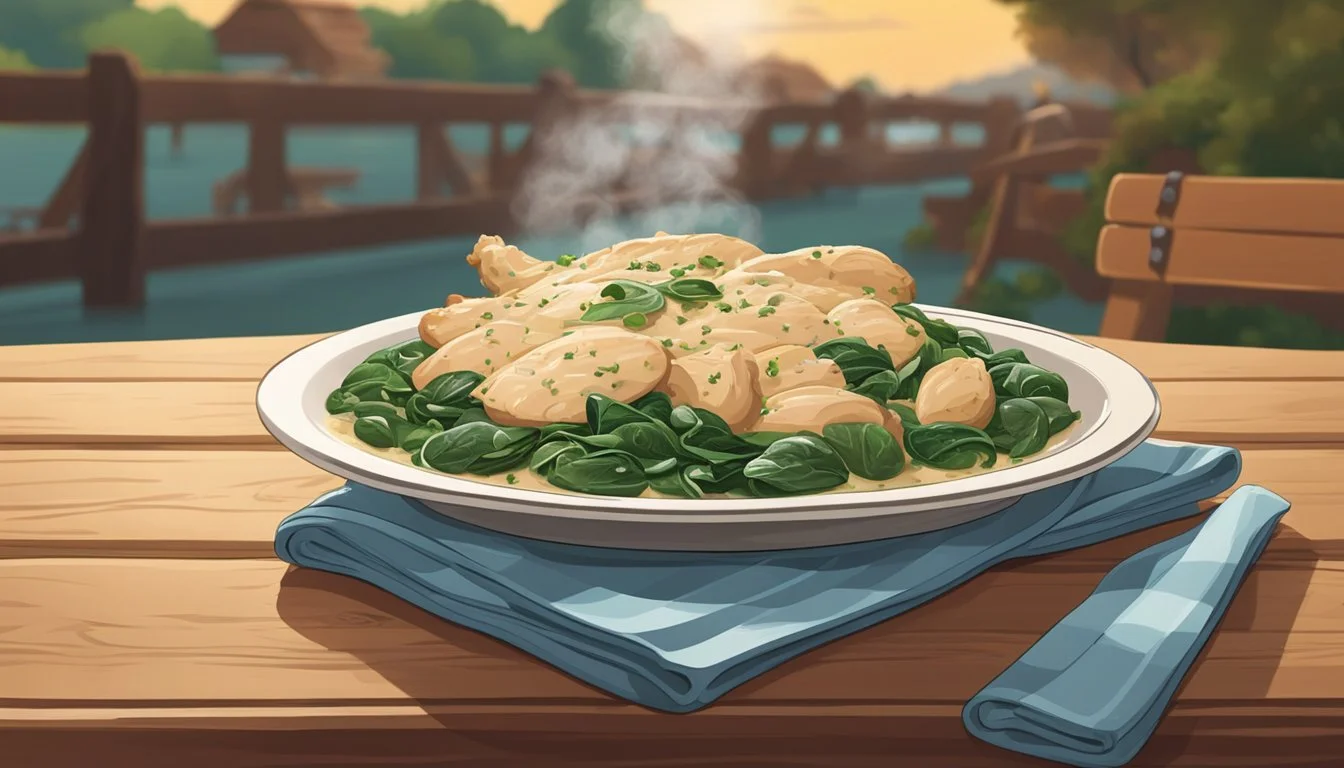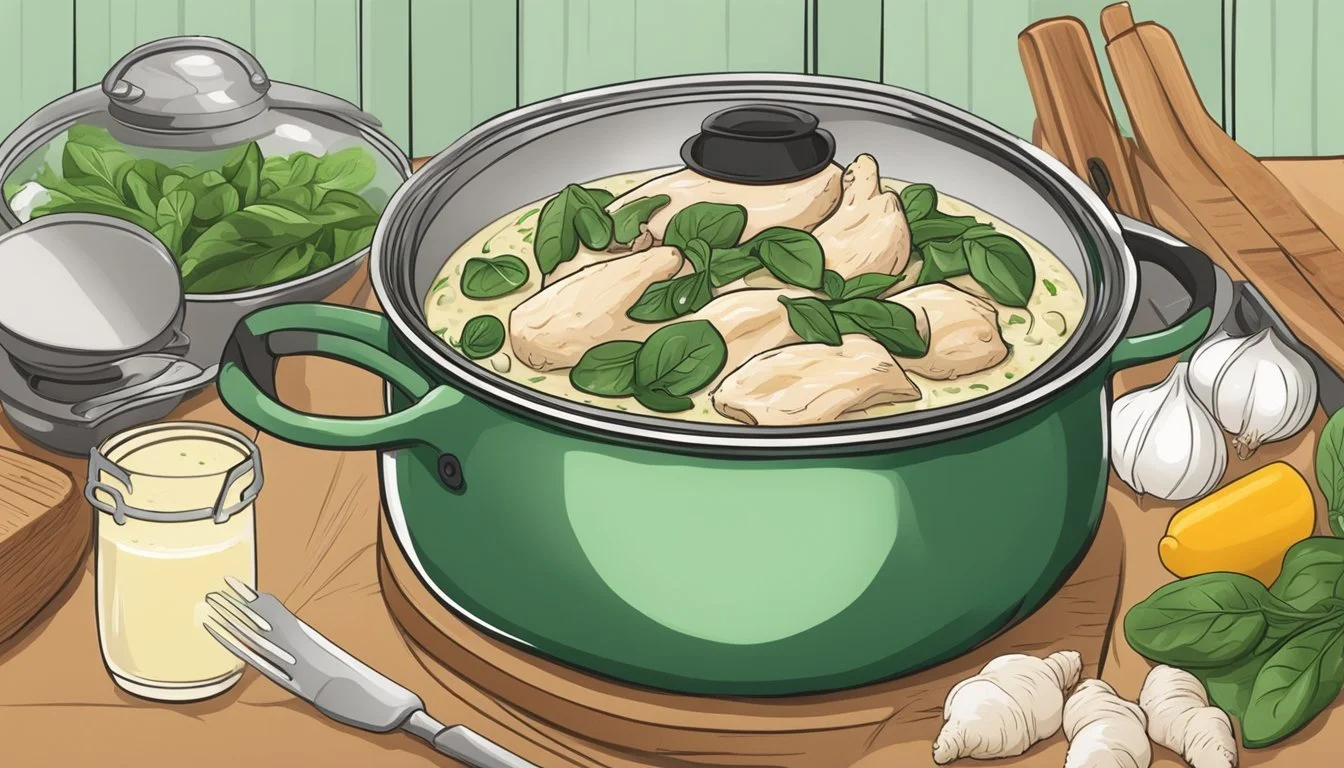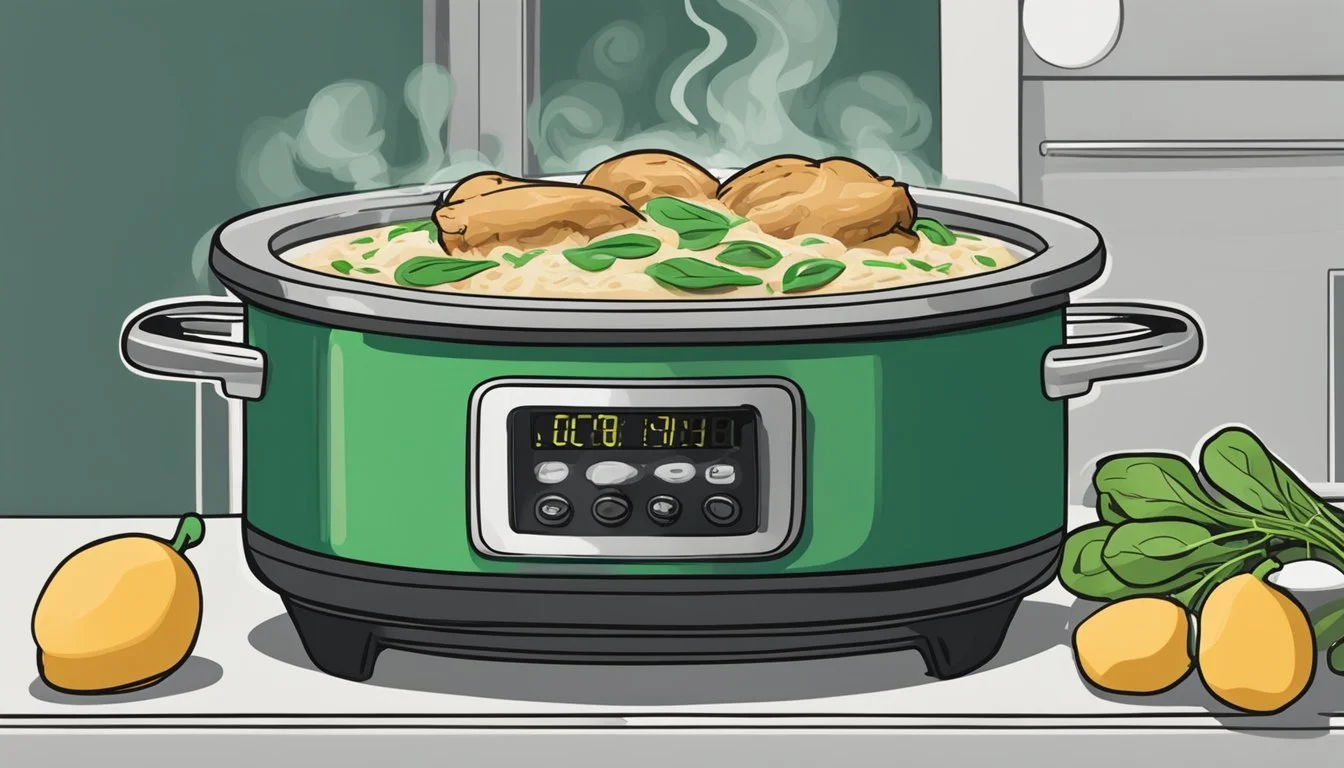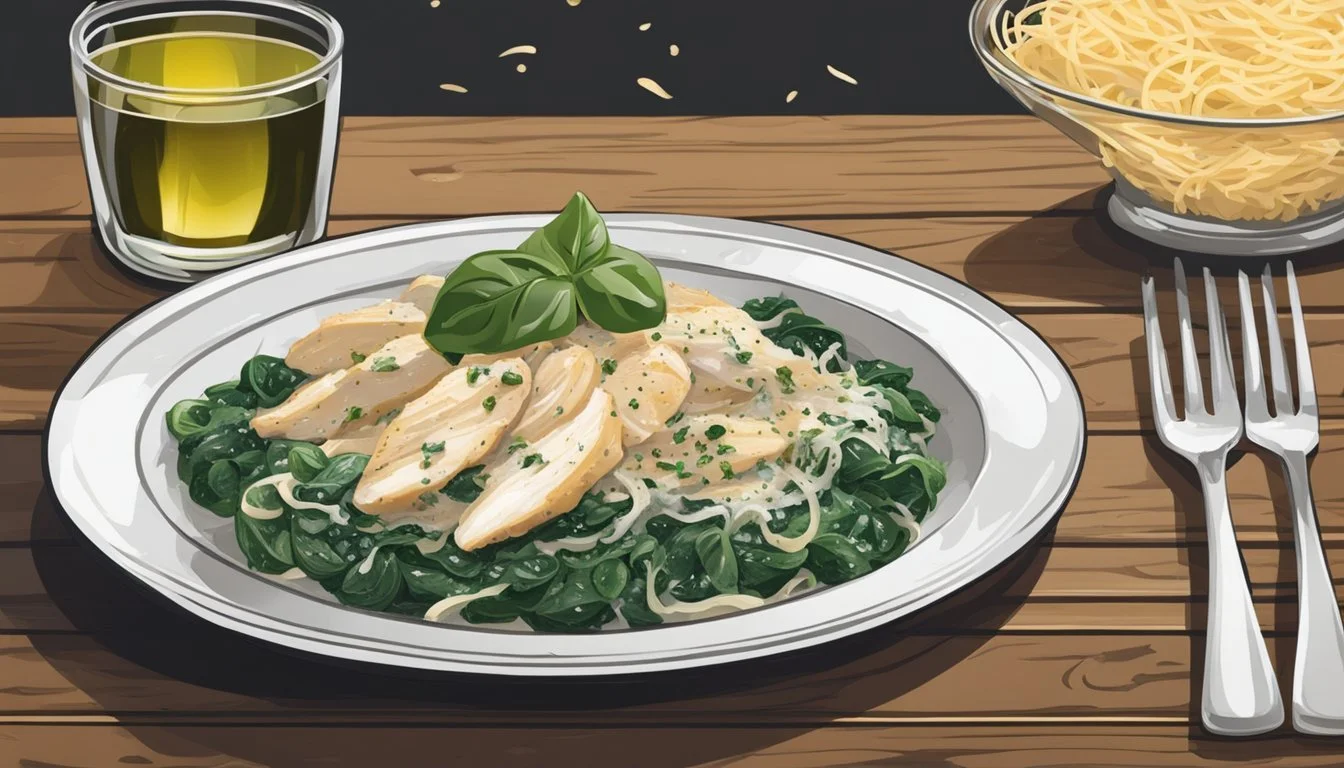How Long Does Chicken and Spinach Alfredo Last?
Freshness Guide and Tips
Chicken spinach alfredo is a comforting and delicious dish perfect for a quick and easy dinner. This creamy pasta recipe combines tender chicken, fresh spinach, and a rich alfredo sauce that makes it a favorite among many. When stored properly in an airtight container in the refrigerator, chicken and spinach alfredo can last for up to 3-4 days.
For those who prefer meal prepping or cooking in batches, this dish is ideal. Ensuring the leftovers are promptly refrigerated can help retain the meal's flavor and texture. When reheating, gently warm it over a low to medium heat to avoid drying out the sauce.
Making chicken spinach alfredo from scratch might not take much time, but it surely brings immense satisfaction. Whether you're cooking for a family dinner or preparing meals ahead, maintaining the dish's freshness for a few days makes it a versatile option.
Essential Ingredients
When preparing Chicken and Spinach Alfredo, it’s crucial to understand the role each ingredient plays. This ensures you achieve the desired flavor, consistency, and nutritional benefits.
Chicken Breast and Spinach
Chicken breasts are the primary source of protein in this dish. They are typically boneless and skinless, offering a lean meat option. For best results, they are either grilled or sautéed.
Spinach provides valuable nutrients and a vibrant green color. Both baby spinach and regular fresh spinach are commonly used. Baby spinach is often preferred for its tender texture and mild flavor. Incorporating spinach not only enhances the dish’s nutritional profile but also balances the rich flavors of the Alfredo sauce.
Dairy Components for Alfredo Sauce
The Alfredo sauce is the heart of this recipe. Heavy cream and butter are essential for creating a rich, creamy base. Freshly minced garlic is sautéed in butter, imparting a fragrant aroma.
Parmesan cheese adds a sharp, nutty flavor and thickens the sauce. Cream cheese can be added for extra creaminess and a tangy undertone. Some variations include milk to adjust the consistency. Freshly grated Parmesan cheese is preferred for its superior taste and melt ability.
Pasta and Its Alternatives
Fettuccine is the traditional pasta choice for Alfredo dishes. Its wide, flat shape holds the creamy sauce well. Other pasta shapes like penne can also be used, offering different textures.
For those opting for gluten-free options, gluten-free pasta provides an excellent substitute without compromising on flavor or texture. Explorations into spiralized vegetables as alternatives to pasta can offer a low-carb variant to the dish.
Additional Flavors and Oils
Seasoning is key to rounding out the flavors. Black pepper and salt are basic, yet crucial components. Olive oil is often used in sautéing the chicken and vegetables, providing a subtle fruity note.
Fresh garlic cloves, minced finely, bring depth to the dish. Some recipes include onion and red pepper flakes to add extra layers of flavor. Ensuring the right balance of these seasonings prevents the dish from becoming bland.
By focusing on these key ingredients and understanding their roles, you can create a delicious, balanced Chicken and Spinach Alfredo that satisfies both in flavor and nutrition.
Cooking Guide
Preparing chicken and spinach Alfredo involves several essential steps including preparing the chicken, making a rich and creamy Alfredo sauce, cooking pasta to a perfect al dente texture, and combining these elements into a cohesive dish.
Preparing the Chicken
Start with chicken breast or use cooked rotisserie chicken for convenience. For raw chicken breast, season with salt and black pepper. Heat olive oil in a large skillet over medium-high heat.
Sear the chicken for about 10–15 minutes until it is browned and cooked through. Ensure the internal temperature reaches 165°F. Once cooked, let it rest for a few minutes before slicing or shredding.
Using pre-cooked chicken like rotisserie chicken can save time and introduce additional flavors. Shredded chicken works well as it mixes evenly with the sauce.
Making Homemade Alfredo Sauce
Begin by melting butter in a skillet over medium heat. Add minced garlic and sauté for about a minute until fragrant. Slowly whisk in heavy cream and bring it to a gentle boil. Reduce the heat to simmer and let it thicken for 3–5 minutes.
Stir in freshly grated Parmesan cheese until melted and the sauce is smooth. Season with salt and black pepper to taste. Adjust thickness by adding more cream or a splash of reserved pasta water.
Homemade Alfredo sauce is rich and flavorful, elevating the dish beyond pre-made sauces.
Boiling Pasta Al Dente
Use a large pot of salted water to boil your pasta. Fettuccine and penne pasta are popular choices for Alfredo dishes. Cook according to the package directions until al dente, usually 8–10 minutes.
Drain the cooked pasta but reserve some of the pasta water. This can be used to adjust the consistency of the Alfredo sauce later. Al dente pasta holds up better in creamy sauces and provides a satisfying texture.
Combining Ingredients
In a large skillet, combine the cooked chicken, homemade Alfredo sauce, and the cooked pasta. Stir in fresh or cooked spinach until well incorporated. The spinach adds a healthy component and brightens the dish.
Mix everything over low heat until everything is evenly coated with the sauce. Adjust the seasoning with more salt and pepper if needed. Serve immediately for the best texture and flavor.
The combination of tender chicken, creamy sauce, and perfectly cooked pasta results in a comforting and delicious meal.
Shelf Life and Storage
Chicken and spinach Alfredo, when stored properly, can maintain its quality and safety for a significant period. Correct storage involves refrigeration or freezing and careful handling.
Refrigerator Storage
Store chicken and spinach Alfredo in the refrigerator promptly after cooking. Refrigerated leftovers should be placed in airtight containers to prevent contamination and the absorption of other odors. They should remain at a consistent temperature of 40°F (4°C) or below.
Cooked chicken Alfredo can last in the refrigerator for up to 3-4 days. Ensuring that the dish is well-sealed helps retain moisture and flavor. Mark dates on containers to track how long the dish has been stored and avoid consuming it past the recommended timeframe.
Freezer Storage
For longer storage, freezing chicken and spinach Alfredo is an effective method. This dish can be stored in the freezer for 2-3 months when placed in freezer-safe, airtight containers. Labeling containers with the date helps in monitoring storage time.
Upon freezing, it's important to note that the texture of the heavy cream and pasta may change. Freezing does not affect the safety of the dish but it can alter texture and flavor. Freeze smaller portions for ease of thawing and reheating.
Tips for Retaining Quality
To maintain the quality of chicken and spinach Alfredo during storage, follow these tips:
Use airtight containers: These limit cross-contamination and help retain moisture.
Avoid overcooking: Slightly undercooked pasta will hold better when reheated.
Reheat properly: Thoroughly heat to an internal temperature of 165°F (74°C).
Freeze quickly: Rapid freezing inhibits the growth of bacteria.
Thaw correctly: Leftovers should be thawed in the refrigerator, not at room temperature.
Handle the Alfredo sauce carefully as dairy can spoil easily. Following these steps will help extend the shelf life and maintain the quality of your chicken and spinach Alfredo.
Serving Suggestions and Variations
Chicken and Spinach Alfredo offers versatility in serving methods and ingredient adaptations. This section explores classic ways to serve the dish, ideas for adding proteins and vegetables, and modifying the recipe to meet various dietary needs.
Classic Serving Methods
Serve Chicken and Spinach Alfredo with garlic bread or a side salad for a balanced meal. The creamy sauce complements the crunch of garlic bread and the freshness of a simple Caesar or Greek salad.
Another popular option is pairing it with a glass of white wine, which enhances the creamy and savory flavors of the dish. It's great for both busy weeknights and a cozy date night dinner.
Adding Proteins and Vegetables
Enhance your Chicken and Spinach Alfredo by incorporating additional proteins like sausage, bacon, or pork. These can be cooked separately or added directly to the creamy sauce.
For a vegetarian twist, consider adding mushrooms, broccoli, cauliflower, or tomatoes, which blend well with the richness of the Alfredo sauce. These vegetables not only add nutrition but also add to the yield of the dish.
Adapting the Recipe for Dietary Needs
To make this meal gluten-free, use gluten-free pasta options. Substitute the regular Alfredo sauce with a dairy-free alternative to create a vegan version. Cream cheese can be replaced with plant-based cream cheese to maintain the texture and richness.
For a vegetarian version, simply omit the chicken and add more vegetables or proteins like tofu. Adjusting the recipe in these ways ensures that everyone can enjoy this classic pasta dish without compromising their dietary restrictions.
Nutrition and Health Considerations
Chicken and Spinach Alfredo, an Italian-American comfort food, can be both delicious and calorically dense.
A typical serving of Chicken Alfredo can contain significant calories due to the cream and cheese in the sauce. Calories in one serving can range from 600 to 1,200 depending on the recipe.
Protein is a positive aspect of this dish. With chicken included, one serving can provide 20-30 grams of protein.
Including spinach boosts the vegetable content and adds vitamins like A and C, as well as iron and fiber.
However, the high-fat content, primarily from cream and cheese, may not be suitable for those with certain dietary restrictions.
Nutritional Values:
Protein: 20-30g per serving
Fat: Varies, can be high due to cream and cheese
Calories: 600-1,200 per serving
Those mindful of their nutritional intake should consider portion sizes and perhaps modify the recipe by using reduced-fat cream or adding more vegetables.






